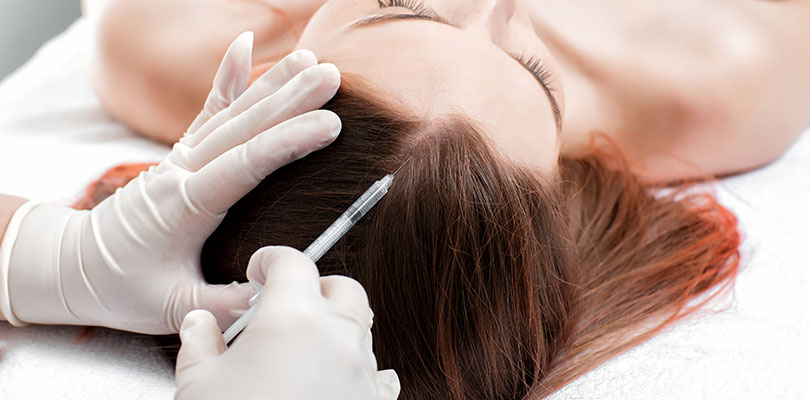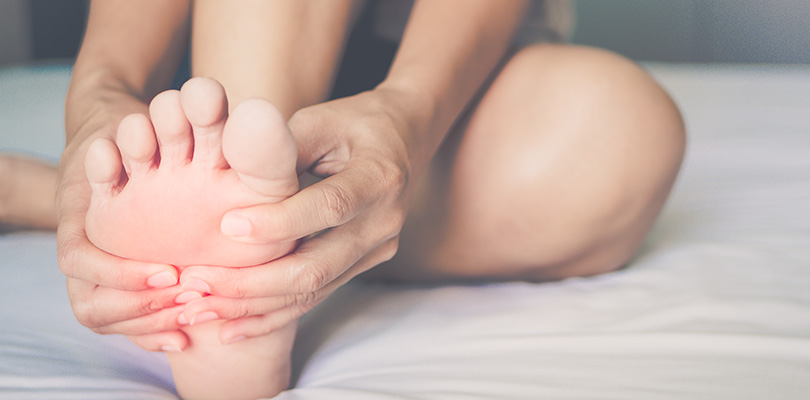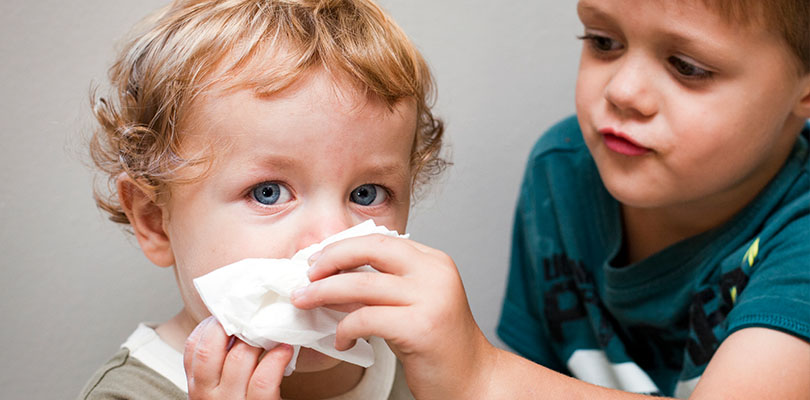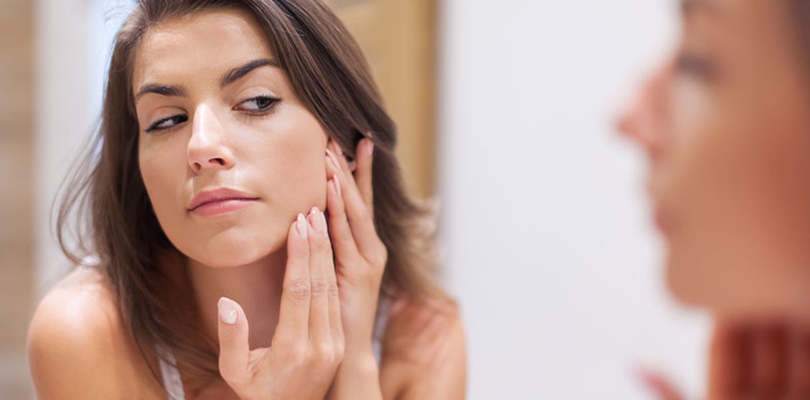Hair Loss Treatment: What Are Your Options?
Hair loss, also know as alopecia or baldness, is a term that is used to describe hair loss on the head or body. While many people associate hair loss with men, women are also affected – in fact, the American Hair Loss Association reports that women account for up to 40 percent of individuals suffering from hair loss in the United States.
If you’ve noticed that your hair is starting to thin, you may be panicking, but there are a variety of treatment options available for hair loss that can help you maintain and regrow your hair and improve your self-esteem.
What Causes Hair Loss?
Genetics is responsible for most cases of hair loss in both women and men, accounting for approximately 95 percent of all cases of alopecia in the United States. Many women and men start to notice hair thinning in their 30’s and 40’s. The other five percent of cases may be the result of various things including stress, diet, illness, hormonal changes, and certain medications.
Hair Loss Treatment Options
Hair loss can be a very upsetting condition, and many people hope for a sure-fire way to regrow the hair that they have lost.
While there is no real way to make sure that all the hair you have lost can be regrown, some hair loss treatments may help to make hair healthier, thicker and shinier to cover any thinning.
As well, some herbal remedies may stimulate hair regrowth. Most natural thinning hair remedies are safe to use, but always make sure that you are using them under the care of a licensed practitioner to prevent any further hair loss or other serious conditions.
Do Natural Thinning Hair Remedies Work?
Hair loss can be an extremely embarrassing condition that affects men, women, and children.
While there are many medical hair treatments available to stop or slow down the effects of hair loss, many people may be hesitant or unwilling to use chemicals on their hair or skin that could potentially have long-term harmful effects. In this case, there are natural hair loss remedies available to help slow down the effects of hair loss.
While natural remedies may appear to work, chances are, like any baldness treatment, they will stop working when they are not being taken anymore. However, hair growth vitamins and massaging the scalp may help to prevent hair from falling out.
See a naturopath or herbal practitioner to see if you can find vitamins that may work for you. Beware of bogus reports of miracle hair remedies online, though—only your medical practitioner can help you decide what remedies will work and be best for you.
Men's and women's hair loss treatment are not the same, and in fact, one natural remedy may work better than another for different types of hair loss. Make sure that whatever hair loss treatment you use, you are eating well and exercising to prevent any other health problems from exacerbating your hair loss.
Always talk to your doctor before starting any hair loss treatment to go over side effects and potential issues that may arise.
Natural Hair Loss Treatment
Herbal hair loss solutions are available by the dozen. Many people decide to use organic hair loss treatments to try to regrow hair.
Exercise, Diet and Your Skin
Washing your hair with apple cider vinegar or sage tea may help your hair grow and revitalize the hair follicles. Chamomile may help with hair itchiness, which is a form of hair loss and can strengthen hair to prevent breakage.
However, organic shampoos and treatments are not proven to work, though they may help by keeping your hair healthy. One of the best ways to keep hair and skin healthy is to eat properly and exercise. A healthy body also promotes a healthy scalp, and this may help stop some hair loss not related to alopecia or other genetic conditions.
A diet rich in dairy and fresh fruits and vegetables will ensure that your scalp is getting the nutrients it needs. Speak to your doctor about the best diet for hair loss—he or she will be able to help you decide what will work best for your specific situation.
While natural hair loss solutions may not always work for everyone, they are worth a try if you have found that other methods do not work. Speak to a naturopath, homeopath or other natural medical practitioners to see what hair loss solutions will work for you and your specific condition.
Hair Loss Supplements and Vitamins
Hair growth vitamins are one such remedy available for hair loss, helping your hair grow back shiny, healthy and thick. Most hair loss vitamins may include vitamins B and C, and a good dose of beta-carotene can help your hair stay healthy as well.
Are your feet always hot or burning? You may be experiencing burning feet syndrome, a condition where your feet feel painfully hot.
Many natural practitioners swear by flaxseed oil for keeping hair shiny and healthy. Certain vitamins and amino acids found in food are important for keeping your hair thick and healthy.
A simple multivitamin is the most cost-effective way to get the nutrients you need in pill form. There are vitamin supplements specially formulated to combat hair loss; however, that might be slightly more effective. These have higher doses of the specific vitamins associated with hair loss, and may also contain amino acids and other nutrients to stimulate hair growth.
As well as vitamins for hair loss, there are several hair growth pills available on the market to help with baldness. Procerin, one such all-natural hair remedy, comes without a prescription and purports to help grow back hair quickly and with few side effects.
Procerin is proven to block DHT, a hormone thought to produce hair loss and helps to regrow hair by stimulating the follicles, much like Rogaine or Propecia.
Prescription Hair Loss Treatments
Finasteride (Propecia) and topical minoxidil (Rogaine) are the only prescription drugs that have been approved by the FDA for the treatment of hereditary hair loss (male pattern baldness).
Rogaine is a topical product that is available over-the-counter in two percent, four percent, and five percent solutions, or in a foam or mousse preparation that can be used by both men and women. It is applied to the scalp in areas where hair growth is desired.
While only between 10 percent and 14 percent of individuals that use this product notice hair growth, the application of this product can help to slow hair loss. There are few side effects to Rogaine - accidental application of the product to the face or neck can result in unwanted hair growth.
Propecia, a 5-alpha-reductase inhibitor, is approved by the FDA for the treatment of androgenic hair loss in men. It is taken in pill form, a 1 mg tablet taken once per day. Propecia is believed to reduce hair loss by blocking natural hormone action in the hair follicles.
While Propecia works well for some types of hair loss, it is usually used to maintain hair that is still present. It needs to be used for a period of 6 to 12 months for full effects to be experienced by the user. However, if treatment is stopped the results may not be maintained. There are possible side effects of this medication including impotence and/or decreased libido.
Hair Transplant Surgery
In patients with permanent hair loss, various surgical options can be performed including hair transplantation procedures, including micro-grafting, punch grafting, and slit grafting, as well as scalp reduction.
Hair Grafting
Hair grafting, which is also known as a hair transplant, is an outpatient procedure that typically requires several sessions, spaced over a period of two to four months, to achieve adequate hair fullness. Micrografts contain one to two hairs per graft, slit grafts contain between four and ten hairs per graft, and punch grafts contain between 10 and 15 hairs.
In a hair grafting procedure, the surgeon removes a hair-bearing portion of the scalp from the back of the head and then cuts the removed piece of scalp into small segments to be transplanted into the balding region. This technique provides a very natural look.
Side effects of hair grafting include swelling, bruising around the eyes, crusting over the surgical sites on the scalp, decreasing the sensation of the surgical sites, and itching at the site of the removed scalp.
Scalp Reduction
Scalp reduction involves the removal of the skin that doesn’t bear hair on the scalp so that the remaining area of the scalp that bears hair can be stretched to fit over the balding area of the head.
In this procedure, a local anesthetic is injected into the scalp that is to be removed, and the surrounding skin is loosened and stretched, and then the hair-bearing scalp portions are brought together and stitched.
This procedure can reduce up to half of the balding area. This procedure is typically used to cover baldness at the top and back of the head but is not used for frontal hairline hair loss. Side effects of scalp reduction may include increased pain, headaches, and mild tightness of the scalp.
Nonsurgical Hair Replacement
Hair replacement doesn't have to mean that you're going under the knife. There are many different options available to you to treat hair loss non-surgically. Furthermore, hair pieces for everyone are increasing in popularity, so it's more socially acceptable these days to cover up hair loss with wigs and toupees or add to your own hair with hair weaves.
Hair Weaves
Hair weaves have become all the rage in many social circles. Once considered only as black hair weaves in the domain of the African-American community, weaves, particularly human hair weaves, are now used by anyone who wants to add length and fullness to their hair, or just to simply change their look.
Whether you're looking to add extreme length, fill in thinning spots or simply want curly hair weaves, you can use hair weaves as an easy and long-lasting solution to hair loss that spares you the trauma of hair transplant surgery such as hair implants or hair flap surgery.
Wigs and Toupees
Wigs and toupees are no longer stigmatized as the bastion of old people trying to cover their balding heads; they have quickly entered the mainstream as an easy non-surgical solution to hair loss, or as a simple way to change your look. You can choose from all different types of fashion wigs, including half-wigs, hairpieces, men's wigs, and women's wigs.
The great thing about wigs and toupees is that they can easily be changed. Unlike hair transplant surgery, which deals with hair loss by encouraging your own hair to grow in different ways, wigs and toupees can be used to completely change how you look, if even only for one night. You can choose different colors, lengths, and styles, from pin-straight to a curly afro, regardless of the type of hair you were born with.
The Bottom Line
Hair loss affects millions of Americans, so if you’re suffering from hair loss, you’re not alone. The good news is that there are various treatment options including natural remedies, prescription remedies, and surgical options to consider.
The type of hair loss, as well as your personal preference, will determine which hair loss solution is most suitable for you.







